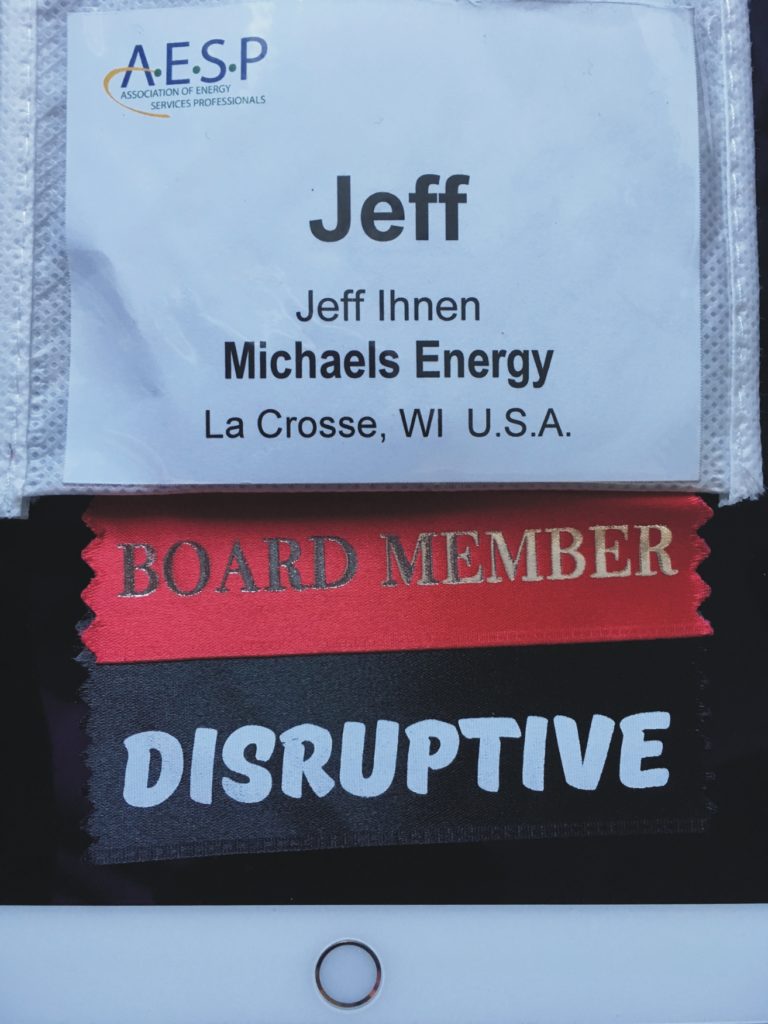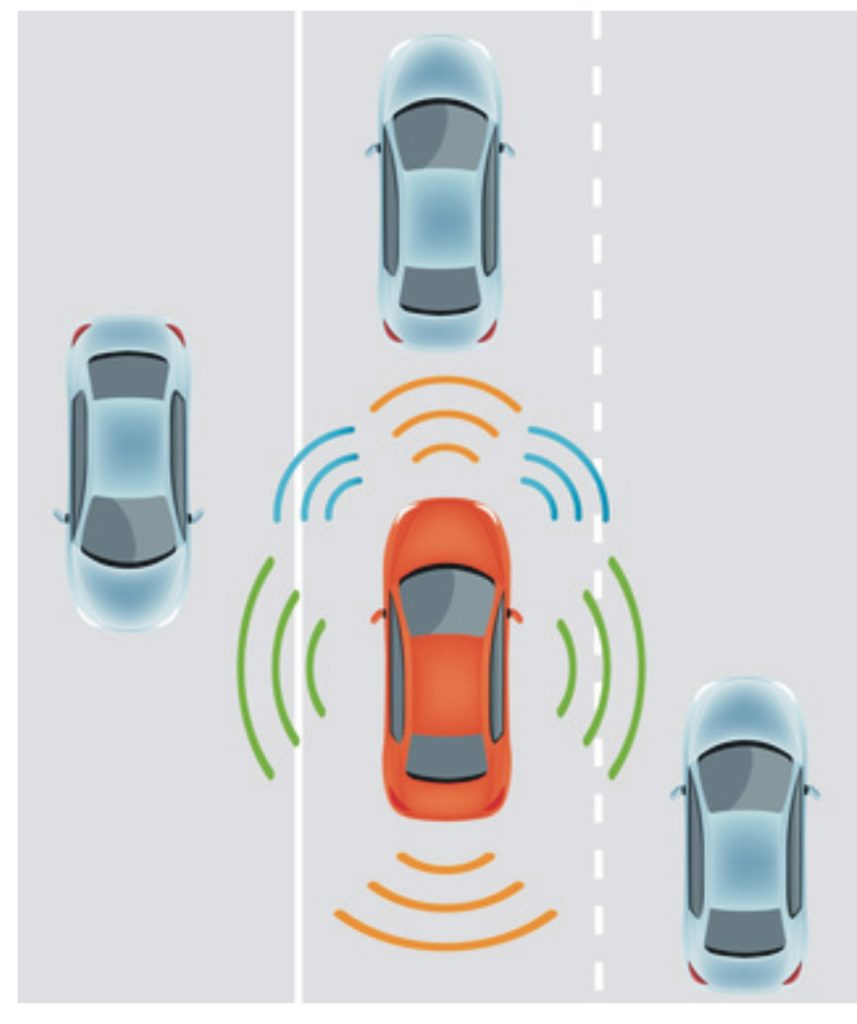
This Rant post is propelled by AESP goers.
Several colleagues and I attended AESP’s summer conference for technology in Toronto last week. We landed numerous positive comments about this blog; some from people I don’t know or never met. I greatly appreciate these comments. They keep me fueled to keep pumping these out. These comments, along with the opening plenary, Embracing Disruptive Innovation, and my participation on AESP’s Board of Directors, pour the foundation for this post.
But first, the antitrust clause: the following nutty views reflect those of the author only, and not those of AESP, Michaels Energy, or my mother, who just started getting the Rant again because I changed her email account for her a while back and failed to have our distribution list updated. Disruption.

Disruptive Technology
I must say it is ironic that I chose a spoof ribbon, “DISRUPTIVE”, for my name-card holder. That was before I considered the content of the conference or knew about the opening speaker, Patrick Schwerdtfeger.
Trucks
Two of the disruptive technologies he talked about include driverless trucks and driverless cars. The disruption of driverless trucks is obvious – millions of truck driving jobs, gone. Truck stops? Who needs em? He didn’t mention that, but I am.
Cars
If driverless cars take off, people won’t need to own cars; they will subscribe to car services. Sorry Uber drivers, and Uber, and GM, Ford, et al. Car sales would fall through the floor because cars would be used all the time rather than sit 96% of the time (Patrick’s statistic). He also mentioned people spend an astonishingly large portion of their time in the car looking for a parking spot – 17% for typical US cities. Driverless cars don’t need parking. Think about that! Drivers can get even less exercise being dropped off at the door everywhere.
He didn’t talk about this, but the pain of traffic jams would be greatly diminished. People like me wouldn’t be changing lanes all the time trying to get ahead. That cascades through the driver system slowing it all down. Cars would get in the fastest moving lane and stay there. Whoa!

There are consequences, like enabling chemical addictions, but that is a small price to pay for taking drunk drivers off the road, or at least off the road in control of a weapon.
The question is, will this stuff take off? Millennials apparently don’t like driving as much as Xers or boomers. I love driving, except in traffic jams.
What Does it Mean?
Guess what Schwerdtfeger means in German. According to Google, it means Schwerdtfeger. Guess what Ihnen means. You or them. “Oh yah, those guys.” That’s me.
Again, I’m going to add some of my discussion here, and you can sort out what is from me and what came from Schwerdtfeger. To make him feel good about that, look him up and hire him yourself, or watch one of his TEDx Talks.
There are a couple categories of implications for disruptive technologies: predator or prey, and run to or away. Yes, that is my rhyme, not his.
Predator or Prey

You are either working to take out someone else’s job, or your job is in the crosshairs of somebody else’s development. That is simply the way it is when you think about disruptive technology. Does it apply to our engineers at Michaels Energy? Better believe it. Rather than looking at buildings and control systems that are completely dorked up and malfunctioning, fault detection systems will take over and automatically send in the technicians to fix what is malfunctioning. The controls would self-optimize for efficiency.
I think one reason we no longer have “secretaries” and instead have “administrative assistants” is a thirty-year-old technology called the word processor, and the twenty-five-year-old technology called the cellular phone. Only Luddites and technology Neanderthals need a person to type or make calls for them. Here is a sage piece of advice – if you want to turn someone off, have someone else call for you. E.g., “Mr. Ihnen, Mr. Luddite would like to speak with you.” Click. If Mr. Lazy Ass can’t call me himself, fuggedaboutit.
Run To or Away
Hiding under the covers or running away from technology are a couple ways to be blindsided. Hoping it won’t come won’t keep it away. You need to reinvent yourself, create your own disruption, or leverage someone else’s disruption in a different way.
We interrupt this rant for this video by Bryan Adams, of Canada fame. Canadians should love it, aye?

Energy Efficiency Programs
Are efficiency programs embracing technology? Answer: not well. Promoting technologies like LEDs and cold-weather heat pumps isn’t exactly embracing technology. That is more like being a free rider as discussed last week. However, I do believe there are real future impacts for optimally deploying technologies such as cold weather heat pumps. I wrote about this in Motivating Efficiency a few weeks ago.
Utilities and their program administrators do not have incentives to embrace technology, but they do have risk. The forces that keep things like lighting around too long are powerful. The resistance to innovative, meaningful programs is strong – NOT just with the utility/administrator, but within the entire industry from evaluators to regulators. Let’s not try anything new. Let’s just pretend what we are doing is making a much bigger difference than it is!
